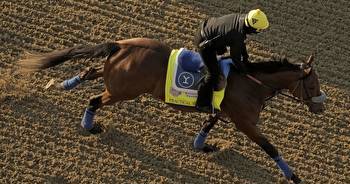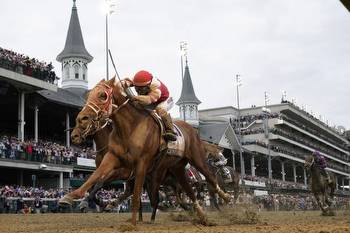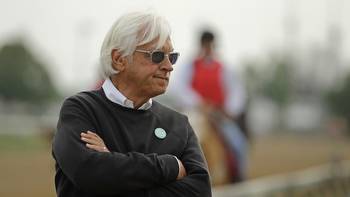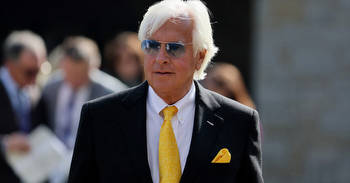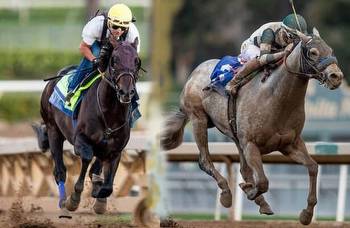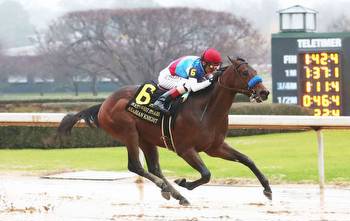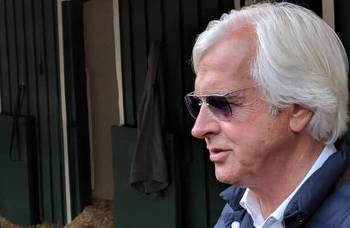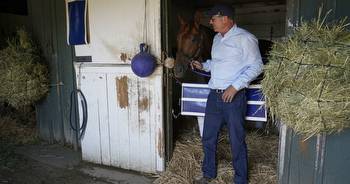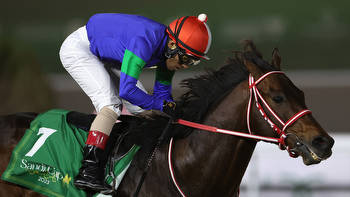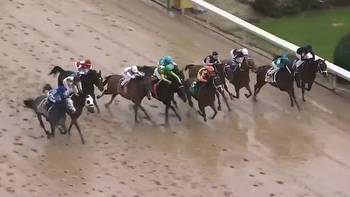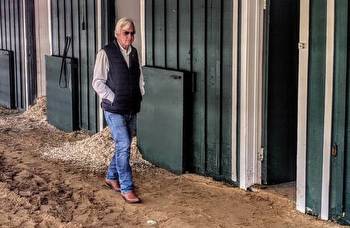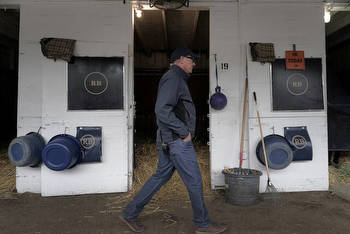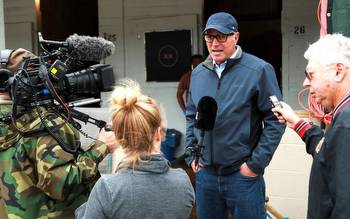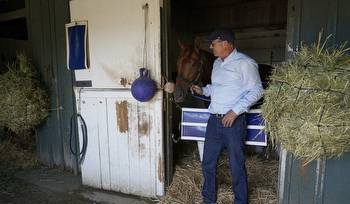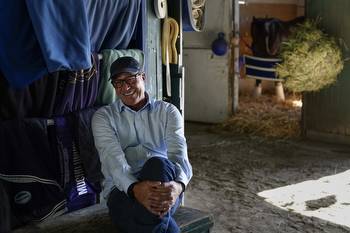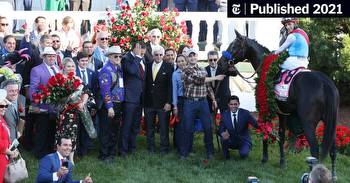Flatter: What rules mean for handicapping event, Ness, Baffert
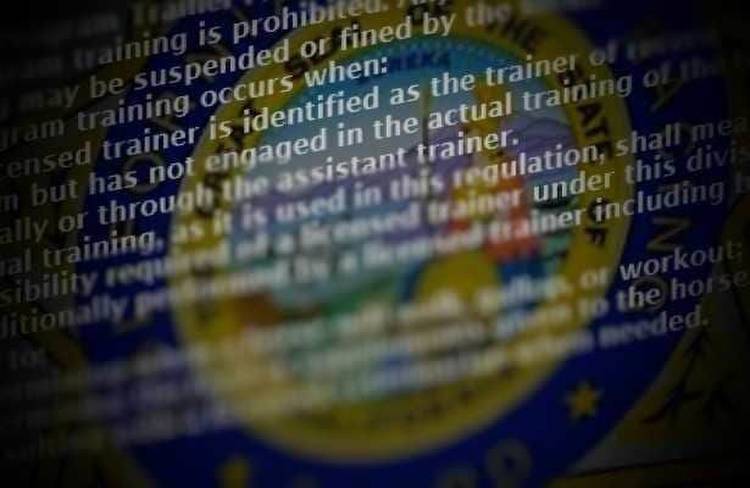
With all thebasketball tournaments in town this week, the Golden Knights had to go on theroad. I still have a hockey analogy, though, that I can work into horse racing.
Why is it whena puck hits the post, it is not counted as a shot on goal? Because, as an oldNHL sage taught me years ago, the post is the beginning of wide. That brings meto what is wide of the boundaries in racing.
The 24th NationalHorseplayers Championship begins Friday, hopefully without the kind of dramathat pulsed beneath the 23rd renewal about 13 months ago. That was when formerNHC Tour winner Jonathon Kinchen tried to go wide and compete in the contestfrom his vantage point at the Pegasus World Cup near Miami.
“All wagersmust be placed personally, and in person, by the contest player,” NHC rule 95reads. There is no leeway. Kinchen said he did not know that. After he wasdisqualified, he apologized, and the National Thoroughbred Racing Associationlaid down the law. Kinchen got a two-year suspension.
Florida, it might be said, was clearly wide of the goal post inside whatwas Bally’s and is now Horseshoe Las Vegas. About 2,000 miles wide. It waspretty cut and dry.
Not so with Jamie Ness. It was hard to figure out where the nets were inhis case. Were they the ones set up in Pennsylvania to keep trainers fromabusing toad venom? Or were they the ones designed to keep trainers from havingcontaminated feed get to their horses? That was the gist of his disputedmedication violation last year.
Upon further review the Pennsylvania State Horse Racing Commissiondecided there was no clear evidence to give Ness anything but the benefit ofthe doubt. A six-month suspension and $5,000 fine were thrown out. Wide, then,was in the eye of the beholder.
Then there is the ongoing case of Bob Baffert, whose fight to clear hisname and restore the late Medina Spirit as the winner of the 2021 KentuckyDerby has been layered in the complexities of medication rules as well as thepower plays of state regulators, the guardians of America’s most importanthorse race and the man who has been the face of racing for a generation.
As nuanced as all those factors have been, there was a new goal postthat was set up by Churchill Downs Inc. when it threw 38 new words into the conditionsfor both the Kentucky Derby and Oaks this year.
“Horses underthe care of any suspended trainer or affiliates may be transferred to anon-suspended trainer and become eligible for earning points on aforward-looking basis so long as the transfer is complete by Feb. 28, 2023.”
After afederal court denied his request for a preliminary injunction to erase thatrule, Baffert and his client owners obeyed. They transferred eight horses toTim Yakteen much as they did last spring, when Taiba and Messier were sent to Baffert’sformer assistant to train them through the Triple Crown while Baffert served adelayed, 90-day suspension.
It surelooked like Baffert and the owners did what they were asked to do. Six of thehorses raced in Yakteen’s name in three Derby preps in the past two weeks.
TheCalifornia Horse Racing Board, though, said not so fast. It has a ruleprohibiting “program trainers,” the ones who are there in name only. And this iswhere this definition wide comes into play.
The CHRBstewards said it was not good enough for signage to go up in the Baffert barndeclaring that the stalls for those horses suddenly belonged to Yakteen, whosebarn is at the western end of Santa Anita’s stable area while Baffert’s iseasternmost. In effect, the horses were transferred but not moved. Whether thedistinction was without a difference was a gray area.
Look at CHRBrule 1502, which starts to spell out what it a program trainer is by saying he,she or they may be “identified as the trainer of record in the official programbut has not engaged in the actual training of the horse either personally orthrough the assistant trainer. Actual training, as it is used in thisregulation, shall mean any responsibility required of a licensed trainer underthis division or any act traditionally performed by a licensed trainerincluding but not limited to determining when a horse will walk, gallop, orwork out; determining the feed or supplements given to the horse; (and) consultingwith a licensed veterinarian when needed.”
Got all that?Where in there does it say that a horse has to live x number of feet or yardsfrom his old trainer? Maybe that is the “not limited to.”
Baffert’s barnis not exactly in a gated community. Carla Gaines has been a longtime neighbor.Baffert and the owners theoretically could have moved those horses past a haybin and met the requirements of the CDI codicil to the Derby conditions as wellas the CHRB “program trainer” rule. Would that have been far enough for stewardsto be satisfied?
The changingof barn assignments for trainers is not unusual. That very thing happened whenGraham Motion took some shippers out of the stalls next to Yakteen’s, therebygiving the Bafteen horses some new space that apparently salved the stewards’objections at Santa Anita.
WhetherBaffert moved the goal posts or the CHRB decided that the beginning of wide hadto be farther away is immaterial. This was all about cosmetics. It was anillusion of authority that was not unlike referees asserting their power early whenthey think a basketball game might get too physical.
The precedentfor the importance of signage already had been established last year. If it wasnot good enough this month to hang a placard saying the existing stalls for theeight Bafteens was Yakteen property, then why did the CHRB order Baffert to takedown all his signs and clear out his personal effects from barn 5 at SantaAnita while he was told to stay away last spring?
In the caseof Baffert, whose side I am on, it feels like he went across the Ohio Riverfrom Louisville to place a legal sports bet in Indiana, and then some Kentucky gendarmeyelled from the other side, “Get back. You’re too close to the shore.”
It probablyis too much to ask Churchill Downs to be specific with what it means to be “transferredto a non-suspended trainer.” Perhaps that detail should be dumped in the lap ofLisa Lazarus from the Horseracing Integrity and Safety Authority, whose magicwand is supposed to make racing all better.
What shouldbe clear by now is that racing has a lot of gray area to negotiate. This goesbeyond the dream of having HISA or some other genie in a bottle creating thatutopia of consistent rules from state to state. If the NFL still cannot figureout the definition of a catch, and if the NBA cannot figure out traveling, whathope does our sport have in bringing subjectivity to its myriad abstracts?
All thisreminds me of a scene from an episode of “Frasier.” It was the one when Niles andFrasier were feuding over something at the wine club. One rule led to another, andthen to a point of order, and then a motion, and then a second and all those infavor saying aye.
Finally, afrustrated club member off to the side muttered, “I remember when we used tocome here to drink.”
I rememberwhen we used to come here to Las Vegas to bet the horses. The beginning ofwide? That would be the two path.












